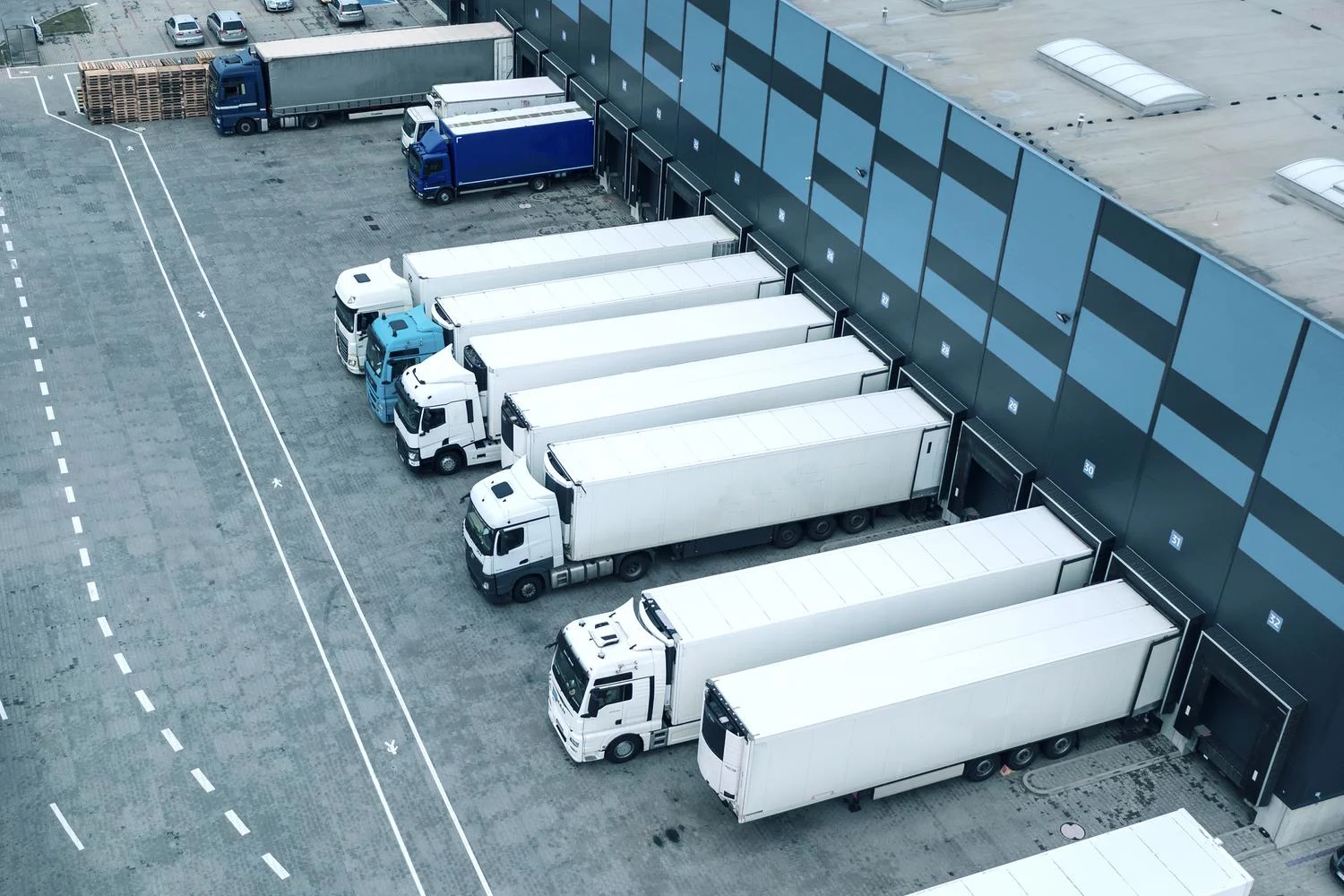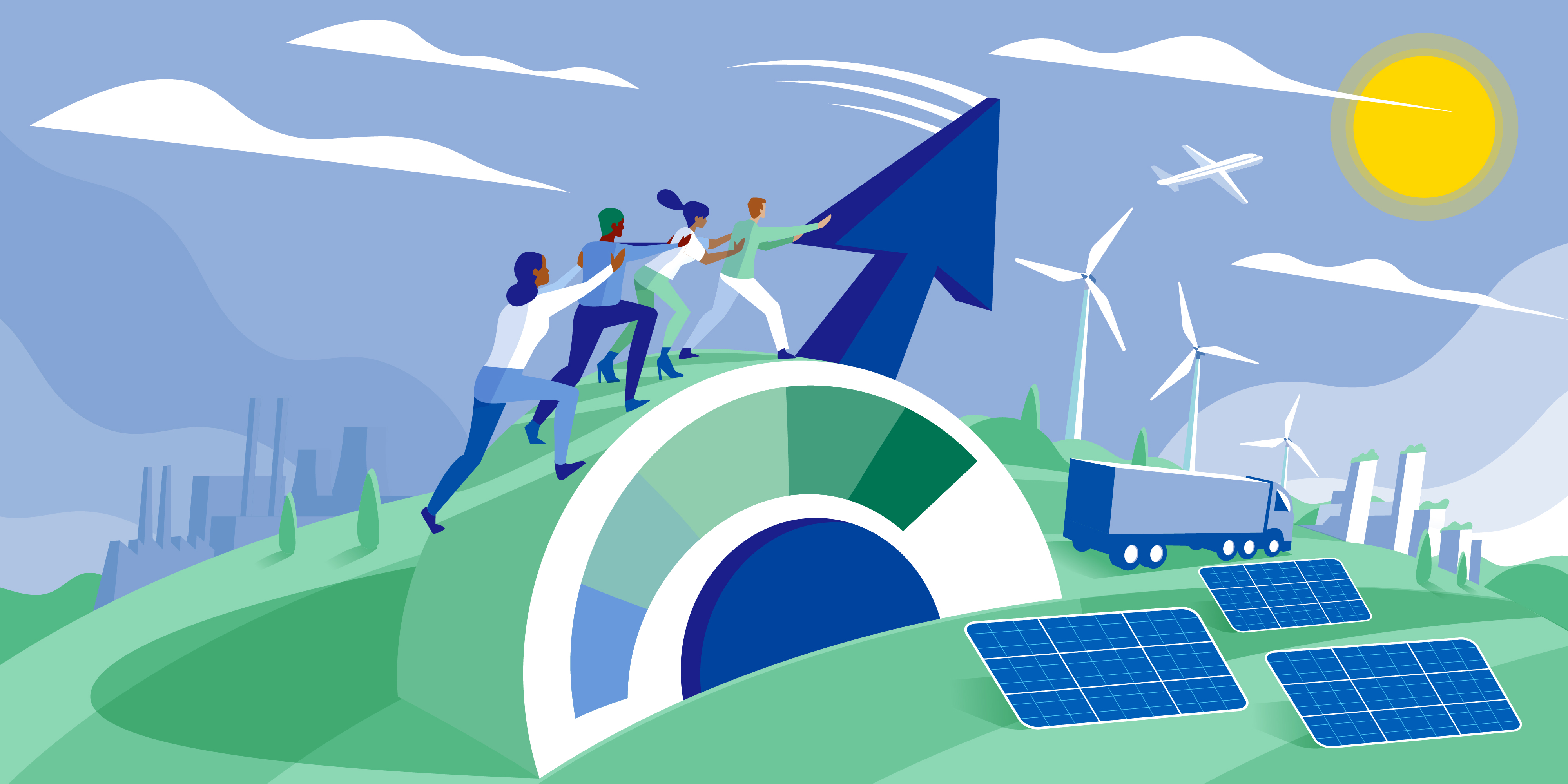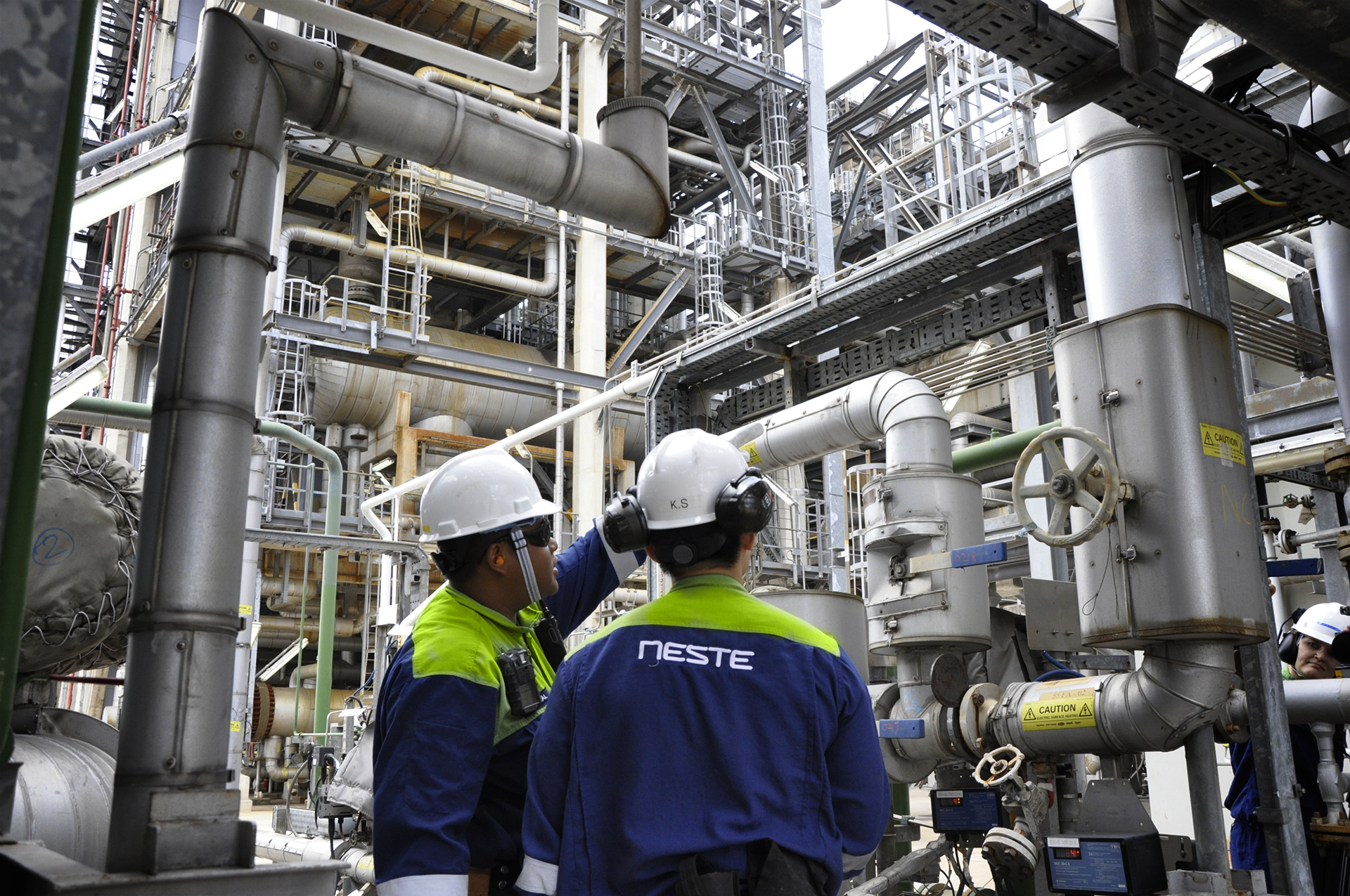
Renewable solutions
13 minute read
Is the future diesel-free? 7 hard questions about diesel, biofuels and ICEs
The whole transport industry agrees on the need to decarbonize traffic fast. However, there’s confusion on what that means for diesel, renewable diesel and the internal combustion engine. Are their days numbered?
Questions answered:
How long will diesel fleets be allowed?
Are the days of the internal combustion engine numbered?
Aren’t renewable diesel and other biofuels bad for the environment?
What are the benefits of renewable diesel compared to fossil-based diesel?
If renewable diesel can help reduce emissions, why isn’t it more widespread?
Will there be enough sustainable raw materials to produce renewable fuels?
Why invest in diesel vehicles now, if EVs and hydrogen are going to end diesel’s story
Transport is the fastest-growing source of global greenhouse emissions, but it doesn’t have to remain that way. We already have all the technologies needed to decarbonize traffic, but one question remains a topic of heated debate: which technology will dominate our transport future?
In light of the latest research and regulation, we answer the hard questions about whether diesel, biofuels and internal combustion engines (ICEs) play a role in fueling our future.
1. Dieselgate prompted some cities to implement diesel bans. How long will diesel fleets be allowed?
Short answer: While legislative initiatives around the world suggest that the market-share of the internal combustion engine will be eroded by battery-power and fuel cells, legislation also creates opportunities for manufacturers that stick with the ICE.
The discussion on ‘diesel bans’ has indeed gained popularity since the so-called dieselgate in 2015. After the emissions testing scandal left a stain on diesel vehicles, some cities in Europe have implemented ‘diesel bans’ to address air quality issues.
"Diesel ban’ is a misnomer"
‘Ban’ is a misnomer, though, as the rules only preclude vehicles that do not meet the most recent tailpipe emission standards. The bans are designed to root out older, most polluting cars, not all diesel vehicles.
More lately, some countries have also started discussing complete bans of all ICE vehicles to reduce CO2 emissions. However, as these nation-wide ICE bans are expected to only affect light- and medium-duty vehicles first, investing in a heavy-duty diesel fleet should remain quite a safe bet – especially as the supply of biofuels to fuel them more sustainably continues to increase.
It remains to be seen how more widespread, nation-wide bans of new diesel or all ICE cars would affect biofuels, such as renewable diesel. However, as biofuels are a key part of the solution to decarbonize traffic fast enough to meet the emissions reductions goals of the Paris Climate Agreement according to sources such as the Internal Renewable Energy Agency (IRENA), it’s fair to argue that biofuels needs to stay exempt from any bans.
2. In the wake of newer transport technologies, are the days of the internal combustion engine numbered?
Short answer: There is huge potential left in the internal combustion engine.
The debate about what to do with the internal combustion engine (ICE) risks throwing out the baby with the bathwater.
There is widespread consensus that internal combustion technology has not reached its full potential yet, in terms of efficiency or lower carbon impact. And when it comes to local air pollutions, studies have found that the newest internal combustion engines are reaching pollutant levels so low that they are hard to measure, with most particulate matter emissions actually being produced from the brakes and tires – not the tailpipe, as one might think.
"The debate about what to do with ICEs risks throwing out the baby with the bathwater."
“The combustion engine is something that can be applied and further developed. It can co-exist with other options. Banning is the wrong debate to have,” insists Markku Honkanen, Head of Technical Services at Neste, the world’s leading producer of renewable diesel refined from waste and residues.
Indeed, at the top end of motorsport in Formula One, the potential of the ICE is very evident: modern V6 hybrid race engines can run at 50 percent thermal efficiency, which means that half of the fuel used by the car is converted into engine power. A typical road car struggles to reach 30 percent. In heavy transport, truck maker Mack unveiled a new engine option in October 2020 that boosts fuel efficiency by three percent, which for vehicles that are routinely driven tens of thousands of miles every year, is no small thing.
Nevertheless, some countries have announced banning the sales of new petrol and diesel cars. In September 2020, for example, California Governor Gavin Newsom announced that that sales would cease in 2035, while heavy-duty vehicles would be given an extra decade of wiggle-room. In Europe, The United Kingdom, France, the Netherlands and Sweden are among the nations with plans to prohibit sales of diesel and petrol cars in place.
"Power-to-x is another reason to keep internal combustion engines in the game."
However, given that there is potential left in the ICE, attention is shifting more and more from single bans towards how to make fuels more sustainable. An important question is how biofuels, such as renewable diesel, can be added into the fuel mix in increasing quantities to cut emissions.
“We’re highly interested in that, because the internal combustion engine is not going to go away,” says Dr. Paul Greening, Emissions and Fuels Director at the European Association of Automobile Manufacturers (ACEA).
There’s another big, future-oriented reason that should motivate legislators and car manufacturers to keep internal combustion engines in the game: power-to-x. It’s an advanced technology through which synthetic, zero-emissions fuels can be produced using only renewable energy and CO2. Although expensive and currently at a fledgling stage of development, demand for power-to-x could be stimulated by other sectors, most notably aviation, which is seeking to drastically reduce its carbon footprint and costs, especially in the wake of the coronavirus outbreak.
3. Aren’t renewable diesel and other biofuels bad for the environment?
Short answer: Regulators and lawmakers are imposing rules that mean these fuels have to be sustainable in order to be used on the market.
There’s a lot of confusion around the differences between different biofuel raw materials.
Some raw materials for biofuel production indeed come with a string of sustainability questions, given that to grow the crops needed to produce them land must be allocated. This could, unless strictly regulated, fuel deforestation or lead to unsustainable agricultural practises. These unsustainable practices have rightfully fallen foul of climate activists and, increasingly, the general public. Legislation has been put in place to ensure that only sustainable biofuels are brought to market.
In addition to sustainably produced crops, biofuel production is increasingly using different kinds of waste and residues. Many companies are also developing new technologies that could expand the feedstock pool to agricultural and forestry residues, algae and other feedstocks that can’t be used at the moment.
“Climate goals need a broad range of sustainable fuels”
“Climate goals need a broad range of sustainable fuels, and the discussion on ‘crops versus fuels’ is not the main issue to address,” says Head of Sustainability Henrik Dahlsson of Scania Sweden. A large part of the renewable sales on the Swedish market is based on biofuels, such as renewable diesel (HVO) and FAME/RME.
But how can consumers and businesses know that biofuels really cut greenhouse gas emissions?
There are policies in place to ensure that. In Europe, for example, the EU Renewable Directive requires all biofuels to reduce greenhouse gas emissions at least 50 percent compared to fossil fuels. The International Energy Agency (IEA) notes that in addition to Europe, the United States and Brazil have established third-party certification frameworks to ensure biofuel sustainability, “but there is a need for other countries to ensure that rigorous sustainability governance is linked to biofuel policy support.”
4. What are the benefits of renewable diesel compared to fossil-based diesel?
Short answer: Renewable diesels can save up to 90 percent of greenhouse gas emissions compared to fossil fuels.
Renewable diesel vs diesel
Renewable diesel, which is a different product than ‘biodiesel’, is produced by using 100 percent renewable raw materials, primarily waste and residues. According to the calculation methodologies of the EU’s Renewable Energy Directive and the Low-Carbon Fuel Standard (LCFS), Neste MY Renewable Diesel can reduce greenhouse gas emissions by up to 90 percent compared to regular diesel when the full lifecycle is analyzed according to methods set by regulators.
"Europe’s car emissions increased in 2019 partly due to a dip in the sales of diesel cars"
The European Environment Agency (EEA) revealed in June that Europe’s car emissions actually increased in 2019, moving the EU incrementally further away from a CO2 target that kicks in at the end of 2020. This was partly due to a dip in the sales of diesel cars, which emit less CO2 than petrol vehicles of the same size.
To hit the goals, options like renewable diesel are going to play an important role in the sector – especially given that heavy transport CO2 output will be regulated for the first time in Europe as of this year, mirroring similar legislative frameworks in California and Japan.
As many drivers are still choosing fossil-based fuels over other alternatives, refiners are also looking for ways to produce fossil-based diesel more sustainably. Neste, among other companies, is looking into so called co-processing technology.
Co-processing refers to simultaneously refining raw materials from fossil and renewable sources, with the aim to create an end-product that’s more sustainable than traditionally refined diesel, explains Neste’s Markku Honkanen. Some technical challenges still need to be overcome to increase the share of renewable feed but the idea already promises to make diesel and petrol more climate-friendly.
5. If renewable diesel can help reduce emissions, why isn’t it more widespread?
Short answer: New rules and methodologies are creating a framework under which supply and demand are set to be boosted.
According to IEA, transport’s global biofuels use needs to increase from just 3 percent in 2018 to at least 9 percent in 2030 in order for climate goals to remain in reach.
To reach that goal, compatibility with existing technology is not a problem. In fact, renewable diesel is chemically similar to fossil diesel, and works in all modern engines. If anything, compatibility is increasing day by day as manufacturers churn out more advanced engines that can burn higher blends of fuel.
"Global biofuels use needs to increase threefold by 2030 in order for climate goals to remain in reach"
Reaching the goal requires scaling up biofuel production, which then requires scaling up demand – something that can well happen, considering that, for example, the sales of Neste MY renewable diesel broke sales records in the second quarter of 2020 despite the global pandemic drastically decreasing overall fuel sales worldwide.
In the EU, biofuel demand is also expected to be further stimulated by tweaking blending rules, which refers to the amount of biofuel that transportation fuel suppliers are required to mix with conventional petrol and diesel.
Neste’s Markku Honkanen says: “What is needed now is more work on the legislative side. CO2 emissions achieved by using biofuels need to be into account when determining a vehicle’s CO2 numbers – that’s how we can increase biofuel sales and cut greenhouse gas emissions faster.”
“Long-term policies are needed, including an increase in what blends are permitted,” adds Henrik Dahlsson.
As overall climate targets are tightened worldwide, it is likely that countries and state administrators will look to clean up the transport sector more and more, given the scope for improvements offered by existing, proven technologies. The EU, for example, will increase its 40 percent emissions reduction target for 2030 to at least 55 percent later this year.
6. Will there be enough sustainable raw materials, such as waste and residues, to produce renewable fuels?
Short answer: There is enough waste and residues to go round. Once demand is boosted sufficiently, supply will follow suit.
To meet the goals of the Paris Climate Agreement, we need to increasingly tap into all available solutions for cutting CO2 emissions, including biofuels. And when it comes to increasing biofuel supply sufficiently, there is enough waste and residues in the world to use as raw materials. What still needs work is efficiently collecting the waste.
"There is enough waste and residues in the world to fuel road transport."
In Europe, for example, refiners are looking to broker agreements with the producers of usable waste streams that would otherwise end up in landfill sites, with many insisting that there are tens of millions of tonnes around the world ready to be snapped up.
Suppliers like Neste are also working hard to widen the pool of usable materials, by developing technologies that allow, for example, dirty municipal wastes to have a second life as raw material for renewable diesel. For years, Neste and other companies have also researched growing organic matter, such as algae, for fuel feedstock that doesn’t compete with farming land, all the while acting as carbon sinks. These ‘third-generation biofuels’ are now approaching commercial stages.
To solve the here-and-now challenge of sourcing sustainable supplies and transporting them where needed, more collaboration is needed between refiners, waste providers, waste collectors and cities. Demand itself could be boosted quite effectively by legislative changes.
"More and more people are in favor of the ‘well-to-wheel’ approach."
When it comes to planning future legislation, more and more people in the transport industry are of the opinion that policies should be based on a ‘well-to-wheel’ approach.’’
Well-to-wheel means that all direct and indirect emissions resulting from a fuel’s supply chain are taken into account, rather than simply measuring tail-pipe output as that is considered an artificial boost to electric-battery vehicles. “You can’t describe that regulation as technology-neutral,” said the CEO of FuelsEurope, John Cooper. “If emissions of the vehicle are elsewhere, in the production or the energy of the vehicle, they are not regulated.”
EVs may be cleaner on the road depending on the energy mix used to recharge them but also create an often sizeable carbon footprint during the manufacturing process. Scania’s Henrik Dahlsson agrees: “A well-to-wheel approach is needed, not just tail-pipe emissions. Consensus in Sweden is now in favor of well-to-wheel.”
7. Why invest in diesel vehicles now, if EVs and hydrogen are going to end diesel’s story?
Short answer: All clean mobility options are needed for us to hit our climate and air quality goals.
Electric cars are increasing in popularity and in some countries, like Norway, even outstripping sales of ICE cars. Driven by falling lithium-ion battery costs, which Bloomberg New Energy Finance predicts will hit $134 per kilowatt-hour this year, passenger EVs are indeed starting to approach price parity with ICEs.
However, electrification is only as clean as the power behind the plug – which in much of the world is still generated by burning coal and gas. It is also a challenge to pair it with heavy transport, where the large power requirements, long-range journeys and higher sunk costs make battery power a difficult prospect in the short- and medium-term.
Hydrogen promises to solve the power and range issues, but few manufacturers are currently selling fuel cell vehicles that compete on price with ICEs. Although investment in infrastructure is starting to materialize, the sector still needs to scale up substantially before it can play a significant role, according to the IEA.
As transport professionals well know, heavy-vehicle operators do not replace their vehicles very often, meaning there is a smaller window for alternative fuelled options to enter the market – especially since trucks have a high resale value on the second-hand market. That is where sustainable liquid fuels and continued use of the ICE come into play. Even if renewable fuels do not reach price parity with fossil equivalents – which could soon lose their advantageous access to subsidies anyway – they will still be cheaper than the cost of replacing entire fleets or building charging infrastructure.
"The ICE will remain a force to be reckoned with."
Scania is in no doubt about the ICE’s continuing importance. According to Henrik Dahlsson, the new range of V8 engines can achieve fuel savings of up to six percent. The building of a new foundry shows the Swedish truck maker’s commitment to further develop the performance of the ICE and its energy efficiency.
There is no doubt that electric-battery and hydrogen will play a big role in urban mobility, as demonstrated by the increasing size of the EV bus fleet. But for long-range logistics, the ICE will remain a force to be reckoned with.
Credits: Samuel Morgan, a journalist specializing in politics, climate and transport, currently working as a reporter for EURACTIV in Brussels.





